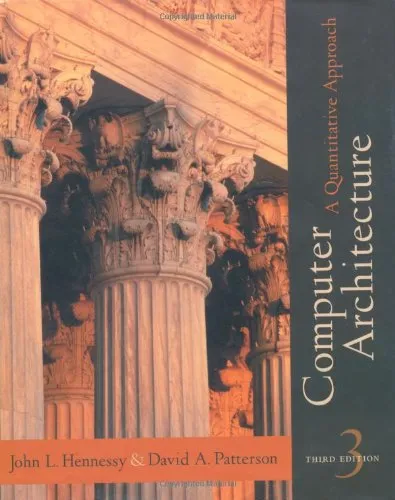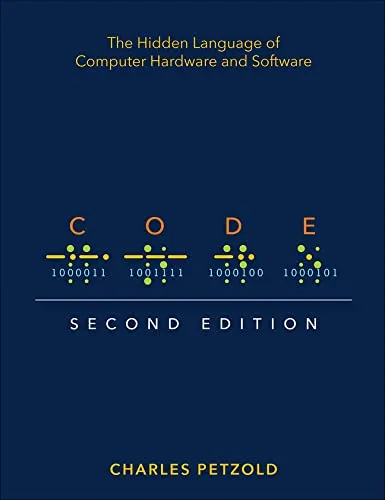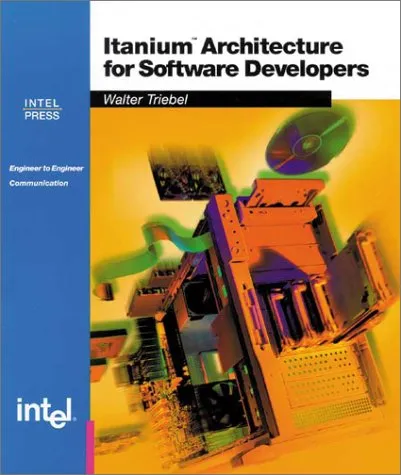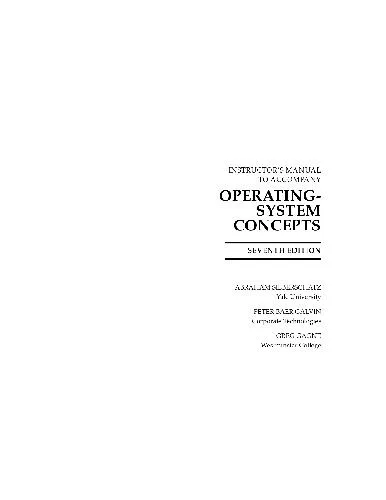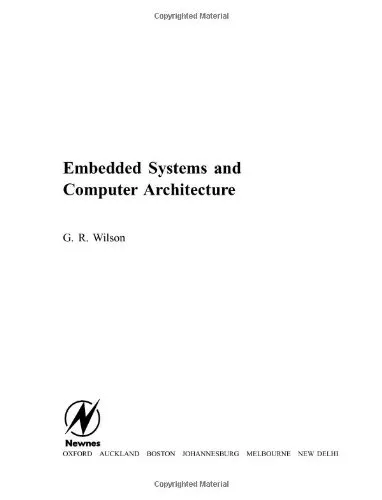Computer Architecture: A Quantitative Approach
5.0
بر اساس نظر کاربران

شما میتونید سوالاتتون در باره کتاب رو از هوش مصنوعیش بعد از ورود بپرسید
هر دانلود یا پرسش از هوش مصنوعی 2 امتیاز لازم دارد، برای بدست آوردن امتیاز رایگان، به صفحه ی راهنمای امتیازات سر بزنید و یک سری کار ارزشمند انجام بدینکتاب های مرتبط:
معرفی کتاب "Computer Architecture: A Quantitative Approach"
کتاب "Computer Architecture: A Quantitative Approach" نوشتهی جان هنسی و دیوید پترسون یکی از معتبرترین و شناختهشدهترین کتب در زمینه معماری کامپیوتر است. این کتاب که به عنوان مرجع در برنامههای تحصیلات تکمیلی کامپیوتر مورد استفاده قرار میگیرد، رویکردی کمّی به بررسی سیستمهای کامپیوتری دارد.
خلاصهای از کتاب
کتاب به بررسی مفاهیم پایهای و پیشرفته در معماری کامپیوتر میپردازد و تکنیکهای کمی را برای ارزیابی و بهبود عملکرد سیستمها معرفی میکند. در هر فصل از کتاب، مفاهیم با استفاده از مثالهای واقعی و محاسبات دقیق تشریح میشوند تا خواننده بتواند فهم عمیقی از مطالب به دست آورد. نزدیک شدن به موضوعاتی چون Instruction Set Architecture (ISA)، پردازندهها، حافظهها و گذرگاهها، و بررسی اثرگذاری آنها بر عملکرد دستگاهها، از جمله محورهای پربحث در این کتاب است.
نکات کلیدی کتاب
- درک عمیق از تکنیکهای طراحی و بهینهسازی در معماری کامپیوتر.
- استفاده از روشهای کمی برای ارزیابی کارایی سیستمها.
- بررسی و تحلیل دقیق روی ارتباطات بین پردازنده، حافظه و سایر اجزای سیستم.
- آموزش و بحث بر روی ISA و نقش آن در طراحی و پیادهسازی سیستمها.
- نشان دادن تغییر روند معماریها با ظهور تکنولوژیهای جدید.
جملات معروف از کتاب
"ما باید سیستمهای کامپیوتری را طراحی کنیم به گونهای که عملکرد بالا و هزینه کمتر همراه داشته باشد."
"کامپیوترهایی که ما امروز میسازیم، محصول محاسبات دقیق و نوآوریهای گذشته است."
اهمیت این کتاب
اهمیت این کتاب در این است که به عنوان یک مرجع جامع برای دانشجویان و متخصصان حوزهی کامپیوتر عمل میکند. رویکرد کمی و دقیق آن فراهمکننده ابزارهای لازم برای تجزیه و تحلیل و بهینهسازی سیستمها است. علاوه بر این، بررسیهای موردی و مثالهای عملی که در کتاب ارائه شده، کمک میکند تا خوانندگان بتوانند مطالب را به صورت عملی به کار بگیرند و در پروژههای واقعی از آنها استفاده کنند. این کتاب با انتشار نسخههای بهروز و استفاده از اطلاعات و تکنولوژیهای جدید همواره به عنوان یک مرجع مهم در دنیای پویای کامپیوتر باقی مانده است.
Introduction to 'Computer Architecture: A Quantitative Approach'
Welcome to the world of computer architecture, a realm where the abstractions of computation meet the realities of hardware. 'Computer Architecture: A Quantitative Approach' by John L. Hennessy and David A. Patterson stands as an enduring classic in this field, combining theoretical rigor with practical insights to shape the understanding of both budding and seasoned computer scientists and engineers. This introduction provides a comprehensive look into the essence of the book, highlighting its significance, the key takeaways it offers, and some memorable quotes that encapsulate its essence.
Detailed Summary
The book delves into the principles and practical strategies of designing a computer that performs well. It extends beyond mere theoretical knowledge, instilling a quantitative approach to measuring performance, efficiency, and cost. Hennessy and Patterson focus on the critical aspects of architecture such as instruction set architecture, pipelining, memory hierarchy, and parallelism, among others.
Each chapter serves as a building block, refining understanding of the key architectural choices that affect performance. The authors stress the importance of balancing complexity and capability, often employing real-world case studies to demonstrate trade-offs and design decisions. This detailed approach not only conveys the facts but also enhances critical thinking, equipping readers to solve engineering problems with precision.
Key Takeaways
- Understanding the impact of Moore's Law on computer architecture and future trends.
- Insight into performance measures and how they guide design decisions, staying aligned with benchmarks.
- Learning the trade-offs involved in implementing various architectural features such as caches and pipelines.
- Grasping parallelism in its multiple forms - data-level, instruction-level, and thread-level parallelism.
- Exploration of emerging technologies and architectures, preparing readers for advancements in fields like quantum computing.
Famous Quotes from the Book
"The purpose of this text is to change the way people learn and think about computer architecture."
"No field in engineering more properly encompasses trade-offs than does computer architecture."
"Quantitative principles are more important now than ever."
Why This Book Matters
'Computer Architecture: A Quantitative Approach' has served as a foundational textbook for generations of students and professionals. Its blend of theory, practical examples, and strict attention to the art of quantitative measurement sets it apart as a seminal work. This book not only equips readers with essential knowledge but also influences how they engage in problems-solving and innovation within the ever-evolving landscape of computer engineering.
The collaborative expertise of Hennessy and Patterson infuses the book with authority and relevance, addressing both historical perspectives and future trajectories in the field. Its ongoing editions ensure that it remains a crucial resource as new technology trends emerge, continuing to educate and inspire.
دانلود رایگان مستقیم
شما میتونید سوالاتتون در باره کتاب رو از هوش مصنوعیش بعد از ورود بپرسید
دسترسی به کتابها از طریق پلتفرمهای قانونی و کتابخانههای عمومی نه تنها از حقوق نویسندگان و ناشران حمایت میکند، بلکه به پایداری فرهنگ کتابخوانی نیز کمک میرساند. پیش از دانلود، لحظهای به بررسی این گزینهها فکر کنید.
این کتاب رو در پلتفرم های دیگه ببینید
WorldCat به شما کمک میکنه تا کتاب ها رو در کتابخانه های سراسر دنیا پیدا کنید
امتیازها، نظرات تخصصی و صحبت ها درباره کتاب را در Goodreads ببینید
کتابهای کمیاب یا دست دوم را در AbeBooks پیدا کنید و بخرید
1547
بازدید5.0
امتیاز0
نظر98%
رضایتنظرات:
5.0
بر اساس 0 نظر کاربران
Questions & Answers
Ask questions about this book or help others by answering
No questions yet. Be the first to ask!
